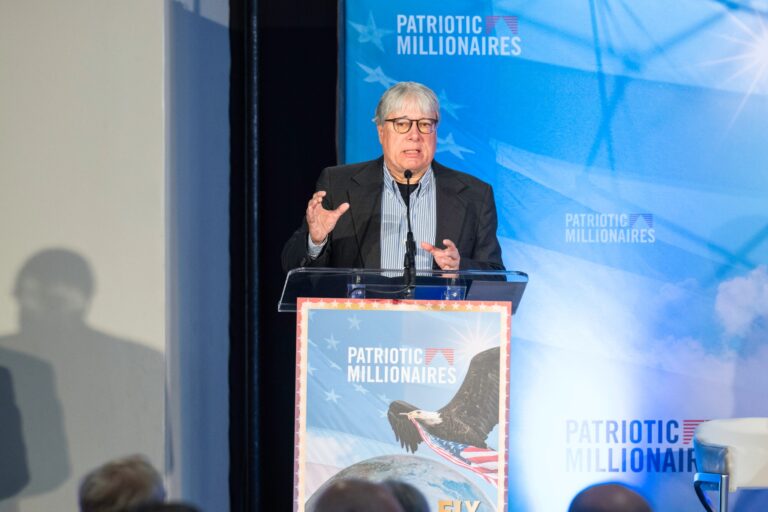Tech News
At 30, Star Trek Generations captured a crucial moment in the sci-fi franchise
Star Trek Generations was released in November 1994 at a moment of peak popularity for the franchise. Star Trek: The Next Generation had aired its series finale six months earlier while still a huge ratings success, and it could easily have kept going for more seasons. But with Deep Space Nine recently launched and Voyager in the offing, the collective wisdom deemed that it was time for The Next Generation to beam to the big screen after 178 episodes.
By teaming up Captains Kirk (William Shatner) and Picard (Patrick Stewart), Generations would mark the official transition from the cinematic adventures of the original crew to the new one. Unfortunately, the entire, um, enterprise was a miscalculation, driven by Paramount’s desire to capitalize off fan enthusiasm at a time when there wasn’t much franchise entertainment in cinemas, and virtually no space operas. The marketplace was ripe, in other words, and the movie was a solid box office success generating about $75 million at the domestic box office and $118 million total.
But in terms of quality and fan reception, Generations represented another blight on the legacy of big screen Trek, which had already survived two of them across just six movies in The Motion Picture and the William Shatner-directed The Final Frontier. And the movie would introduce issues that plagued all four Next Generation feature films.
Poor timing

Part of the problem with Generations was timing. TNG had not only just gone off the air earlier that year but it had done so in an acclaimed two-part episode, All Good Things…, which remains one of the show’s best. The ’60s-series crew, meanwhile, had bowed out just three years earlier in the classy Star Trek VI: The Undiscovered Country. At the conclusion of that movie, Kirk had unambiguously handed over the franchise to The Next Generation, intoning in his final captain’s log: “This ship and her history will shortly become under the care of another crew. To them and their posterity will we commit our future.”
In other words, the ending of both iterations of Trek had impressively stuck the landing. If Paramount execs couldn’t leave well enough alone for a while, they needed to come up with a good story and put the movie in the hands of a better filmmaker than David Carson, who had directed television, including episodes of TNG, but never a feature film.
Pairing Kirk and Picard

The idea to put the two beloved captains in action together for the first time wasn’t a bad one. The Next Generation had already featured Spock (Leonard Nimoy), Scotty (James Doohan), and McCoy (DeForest Kelley), with the episodes featuring Spock and Scotty being especially well-received.
Kirk had yet to make his entrance into the 24th-century version of the universe, and so the writers came up with the idea of him and Picard meeting up in the Nexus, “an extra-dimensional heaven-like realm in which one’s thoughts and desires shaped reality…and time and space had no meaning, allowing one to visit any point in time and any place that one could imagine.” (I’m quoting directly from the fan page here because I never did quite get a handle on it.)

The kicker is that the only way to enter the Nexus is through a violent “ribbon” of energy that destroys everything that comes near it. If part of the motivation for Shatner’s appearance was that he wanted a good onscreen death for Kirk (after Spock got one of the most famous deaths in movie history), he got a decent one in the opening sequence when he saves the Enterprise B from the Nexus before being sucked into space. How Chekov (Walter Koenig) and Scotty aren’t also vacuumed into the cosmic maw as they stand gawking out of the huge hole remains a mystery. But never mind, it’s one of the few impressive shots in the movie.
The opening sequence also introduces the film’s villain, Dr. Soran, played by Malcolm McDowell, his hair looking like albino corn stalks. Soran has been inside the Nexus and is desperate to get back to it so that he can forget the horrors of his world being assimilated by the Borg. To achieve this, he will have to run the ribbon through a planet, thereby causing the death of hundreds of millions. Picard must enlist Kirk — who we discover has not died (!), but entered the Nexus — to help defeat Soran and save the planet.

Unfortunately, Kirk got a second death scene at the film’s climax that is infamous for being poorly staged and acted and generally just embarrassing (Shatner himself didn’t like it). The fact that Paramount added $10 million to the initially underfunded budget of $25 million just so they could film this scene after the first tested poorly is confounding.
Everything but the food replicator

The idea of a character so devastated by grief that he’s willing to commit genocide to not have to face it is an interesting one, but it would have been better served as the driving idea of a single episode, not given short shrift in a movie that crams in as many classic Trek elements as possible.
For example, the TNG cast make their first appearance in a Holodeck scenario, which was a popular feature on the show. In this one, they conjure up the deck of a 19th-century sailing ship to stage a promotion ceremony for Worf (Michel Dorn). Why he’s only now being promoted from lieutenant to lieutenant commander after seven years of helping save the galaxy from every possible threat is just one more of the indignities famously heaped on his character, and true to form he gets little do to thereafter.

The movie tries to do more with Data (Brent Spiner), given that he was arguably TNG‘s most beloved character. As with Spock before him, many of Data’s storylines focused on his evolution toward humanity. But Generations takes this almost to parody by having Data install an emotion chip and then acting out comedy so broadly, with such lame punchlines, that it’s cringeworthy.
While Spiner hams it up, Shatner phones it in, with Carson making no real effort to even hide his stunt doubles. The stunt work in general features a ridiculous number of shots of Enterprise crew members getting thrown around during explosions and crashes as if the filmmakers had no knowledge that similar shots throughout franchise history were famous for being unintentionally hilarious.
Finally, much of the climactic action takes place on a “planet” that is no more than a rock formation shot in Valley of Fire State Park in Nevada, reminiscent of so many of the underwhelming planetary locations from both The Original Series and TNG. In terms of both the rocky location and the quality of special effects, this one evokes the original series episode, Arena, in which Shatner tussles with a guy in a rubber lizard suit.
More Klingons

As I wrote previously, after introducing the popular Klingon Bird of Prey ship in Star Trek III, the franchise got as much mileage out of it as possible. Despite being 100 years later in the Trek timeline, it is featured in Generations as well. The ship had been brilliantly used in The Undiscovered Country alongside the classic Klingon D-7 cruiser. Generations lazily duplicates the ship’s final moments from that far superior movie, with the final explosion obviously reusing the same footage.
The one new conceit here is that the Klingon commanders are women, Lursa and B’Etor Duras, gamely played by Barbara March and Gwynyth Walsh, who had also appeared in the show. Unfortunately, any hint of progress in terms of gender representation is undercut by the fact that they sport plunging cleavage. At least Counselor Troi (Marina Sirtis) got to put on a regular uniform by this point. I guess the savage Klingons hadn’t evolved that far.
Generations is visually unappealing

Apart from story issues, the movie is a visual mess. A cinematic TNG adventure was always going to look different from the show, because early ’90s movies were both shot and projected in 35mm film, as opposed to series episodes, which were shot in 35mm, but transferred to tape for editing. This resulted in a significant loss of resolution, making it look as though it was shot on video. The quality was further diminished by the televisions of the era.
The 35mm of Generations is clear and crisp enough and the movie looks sharp in 4K. The problem is that Carson and his team chose a visual design for the film that jarringly contrasts the show, mostly because the action inside the Enterprise-D and other spaceships is so dark. TNG was a brightly lit show; more specifically, it was very evenly lit, which makes sense given that a ship’s lighting is artificial.

But Carson shoots the interiors with chiaroscuro lighting, so that some scenes evoke Caravaggio and others film noir – not ideal unless the characters are acting out Double Indemnity in the Holodeck. Not surprisingly, the director of photography was John A. Alonzo, who had shot classic crime films such as Chinatown and Scarface. The look he achieves simply doesn’t feel like TNG, a problem the movie series never solved, even in the much better First Contact two years later.
Neither does Carson display any gift for cinematic composition. Movie screens are rectangles, but in those days, television was shot to be broadcast from square sets. The result is that Generations is awkwardly staged and framed as if Carson thought he was still working in TV. Overall, the mise-en-scène is jumbled and ugly, with goofy props sticking out at odd angles. The less said about the garish costumes, the better.
The film is not in the same F/X league as previous Trek features

Contrast this with the, ahem, stellar cinematic work that Nicholas Meyer did for with ship interiors in The Undiscovered Country. His lighting is also dim, but it’s much more muted, with subtle contrast and softer colors that evoke the subdued lighting of a submarine.
The look of the ‘60s series was reinvented for the movies a decade after the show ended and in a new era of special effects (and bigger budgets) for space movies. Audiences expected it to look both different and better. As such, major special effects artists were recruited for the gigs. Douglas Trumbull, who had done FX for 2001, worked on Star Trek: The Motion Picture, and it remains an impressive visual achievement.
George Lucas’ Industrial Light and Magic then took over for Star Trek II during a revolutionary era of FX. That summer alone, Wrath of Khan shared theaters with E.T., Blade Runner, Tron, and The Thing, all FX classics.

Generations came in the shadow of that era, as well as amid the CGI revolution that had already produced Terminator 2 and Jurassic Park. It couldn’t compete on the budget that Paramount allotted for it. And anyway, TNG had always been more beloved for its stories and characters than its visuals.
Even though the next movie in the series, First Contact, was much better in terms of both story and special effects, the Next Generation crew had peaked in pop culture, which was borne out by the lame final two movies, Insurrection and Nemesis. That three recent seasons of Picard did little to burnish the show’s sterling legacy is yet another reminder that we’d all be happier if corporations let their franchise entertainment die a good death and — unlike Kirk — never be revived.
Star Trek Generations is streaming on Paramount+.
Tech News
World leaders at Davos need to tax millionaires like me. The fate of our planet and democracy depends on it

The ultra-rich pose a threat to our democratic institutions—and the problem will deepen if extreme wealth is left unchecked. Read More
Tech News
SK Hynix dips after record profit misses lofty expectations

Nvidia’s main supplier of high-bandwidth memory posted an operating profit of $5.6 billion in the December quarter, after a 75% rise in revenue. Read More
-

 Tech News1 month ago
Tech News1 month agoHow Costco’s formula for reaching uncertain consumers is pushing shares past $1,000 to all-time highs
-
Tech News1 month ago
Quentin Tarantino thinks movies are still better than TV shows like Yellowstone
-

 Tech News1 month ago
Tech News1 month agoInside the FOMC: Boston Fed President Susan Collins on changing her mind, teamwork, and the alchemy behind the base rate
-

 Tech News1 month ago
Tech News1 month agoTrump and members of Congress want drones shot down while more are spotted near military facilities
-

 Tech News1 month ago
Tech News1 month agoLego bricks have won over adults, growing its $10 billion toy market foothold—and there’s more to come
-

 Tech News1 month ago
Tech News1 month agoXi Jinping urges Macau, the world’s largest gambling hub, to diversify away from casinos
-

 Tech News1 month ago
Tech News1 month agoNancy Pelosi has hip replacement surgery at a US military hospital in Germany after falling at Battle of the Bulge ceremony
-

 Tech News1 month ago
Tech News1 month agoHundreds of OpenAI’s current and ex-employees are about to get a huge payday by cashing out up to $10 million each in a private stock sale




